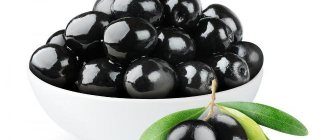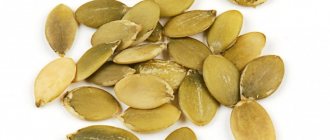Chemical composition and calorie content of grapes
Depending on the type, the content of chemical substances and the medicinal properties of grapes vary. Grapes with seeds are considered more useful. It contains a higher concentration of anthocyanins - substances that protect the body from oxidation by free radicals.
| Calorie content, kcal | 72 |
| B (proteins, g) | 0,61 |
| F (fat, g) | 0,58 |
| U (carbohydrates, g) | 15,3 |
| Water, g | 81,0 |
| Dietary fiber, g | 1,63 |
| Cobalt, µg | 2,1 |
| Silicon, mg | 12,1 |
| Vanadium, mcg | 10,2 |
| Boron, µg | 362 |
The product contains sugar (up to 20%), a large list of useful organic acids, calcium, potassium, magnesium and iron salts, as well as double salts of the same elements. In addition, grapes contain tanning, pectin and coloring compounds, quercetin, enine, mono- and didelphinidin glycosides, vitamins A, B1, B2, C.
There is such a term as “ampelotherapy”. It means treatment with grapes, which involves not only the fruits of the plant, but also leaves, wood and everything that can be obtained from the bush. The beneficial properties of grapes for the human body are also found in the leaves of the plant, where sugars, acids (tartaric and protocatechin), tannins, inositol, quercetin, carotene, choline, betaine, and aloxuric bases are present.
Attention! You can treat not only the bunches, but also other parts of the plant. Their beneficial properties are identical.
Chemical composition and nutritional value
The calorie content of 100 grams of product is 72 kilocalories. It consists of 97.03% water and contains a lot of carbohydrates. Their content in berries sometimes reaches 30%. Most of it is glucose. The sour taste is due to the high content of tartaric and malic acid.
| Name | Amount per 100 g, mg | % Daily Value |
| B1 | 0,05 | 3,3 |
| B2 | 0,02 | 1,1 |
| B5 | 0,06 | 1,2 |
| B6 | 0,09 | 4,5 |
| B9 | 0,4 | 1 |
| C | 6 | 6,7 |
| E | 0,4 | 2,7 |
| H | 0,15 | 3 |
| K | 1,5 | 12,2 |
| PP | 0,3 | 1,5 |
Grapes cannot be called a storehouse of vitamins. These are not raspberries or currants, but there are a lot of antioxidants, fiber, pectins, and organic acids. Tannins and enzymes are present:
- invertase,
- pectinase,
- lipase,
- protease.
Potassium can be isolated from minerals. In raisins, the concentration of the element triples.
There is also a lot of silicon here, but its amount is orders of magnitude lower than in melon, pineapple or strawberry. For this reason, grape-based face masks have not gained as much popularity as strawberry or banana ones.
| Element | Amount per 100 g, mg | % of norm |
| Potassium | 225 | 9 |
| Silicon | 12 | 40 |
| Magnesium | 17 | 4,3 |
| Phosphorus | 22 | 2,8 |
| Iron | 0,6 | 3,3 |
| Iodine | 0,8 | 5,3 |
| Cobalt | 0,2 | 20 |
| Manganese | 0,09 | 4,5 |
| Copper | 8 | 8 |
| Molybdenum | 0,3 | 4,3 |
| Chromium | 0,3 | 6 |
Silicon is a structural component of connective tissue. It provides strong bones, tightened skin, strong nails. It also increases resistance to bacteria, improves the absorption of vitamins, and participates in the synthesis of hormones, enzymes, and amino acids. In the body, Si is in second place after oxygen, accounting for 0.01% of body weight.
Note the relatively high cobalt content. The element is part of vitamin B12, helps to avoid anemia and increase hemoglobin. The benefits of Co include renewing bone cells, improving metabolic processes, and participating in the synthesis of thyroid hormones.
There are not as many mineral salts in grapes as in gooseberries or chokeberries, but they are not valued for them.
Health benefits of grapes
The benefits of grapes include improving metabolism, diuretic and anti-inflammatory effects. Increases the secretion of mucus in the respiratory tract and facilitates expectoration. They have benefits for humans in the form of a mild laxative and diaphoretic effect. The healing properties of dried grapes include tonic, laxative, hematopoietic, choleretic and anti-inflammatory effects.
The benefits of leaves are in regulating blood pressure, normalizing metabolism, stimulating appetite, possessing antiseptic, anti-inflammatory, hemostatic, wound healing and other beneficial properties. Alcohol, hot extracts and other forms of medicines are prepared.
What are the benefits of grapes for women?
Grapes contain useful substances - antioxidants. These are flavonoids and phytoncide resveratrol, which prevent the body from naturally withering and help maintain health and youth for a long time.
The benefit of grapes for a woman’s body lies in its anti-aging properties, which are used to make daily and medicinal cosmetics. The most valuable is considered to be grape seed oil, which is simply replete with useful elements necessary to maintain healthy hair, skin, and nails.
They contain phytoestrogens, which can partially replace the lack of female hormones during menopause and help a woman survive this difficult period. The benefits of grapes are manifested in increased sexual desire. A high concentration of glucose increases energy, good mood and prevents depression from developing.
What are the benefits of grapes for men?
Grapes contain sugars, represented by glucose (8 g) and fructose (8 g). These substances provide energy and improve brain function. The benefit of grapes for the male body lies in the high concentration of boron, which helps maintain sexual function for as long as possible.
Grapes have an expectorant effect, which benefits those representatives of the stronger sex who suffer from chronic bronchitis as a smoker or have had a cold. In folk medicine, a decoction of raisins with a small amount of onion juice is used as a good remedy for coughs and hoarseness.
We recommend reading: What are the benefits of raisins: properties and contraindications
The benefits of grapes are their antitoxic properties. It is recommended for poisoning with strychnine, cocaine, morphine, arsenic, sodium nitrate, as well as for skin diseases. It is also useful to give it for alcohol intoxication. The high glucose content in the fruit helps stimulate the heart muscle, and potassium salts compensate for the deficiency of the element: as is known, large doses of alcohol wash it out.
Important! Grapes are useful to all healthy people, without exception, but provided that the measure is observed.
Grapes: benefits and harm to human health
The sweet pulp contains large amounts of fructose and glucose. It contains a lot of potassium ions and organic acids. Sugars are easily digestible and give strength. Grapes contain valuable protective phytonutrients:
- stilbenes (resveratrol, piceatannol, pterostilbene);
- flavonoids (cahetins, kaempferol, quercetin);
- phenolic acids (caffeic, coumaric, ferulic, gallic);
- carotenoids (beta-carotene, lutein, zeaxanthin).
These are strong antioxidants that protect cells from free radicals. They have a pronounced anti-inflammatory, antimicrobial, antifungal effect.
The benefit of flavonoids is to reduce the risk of heart disease. Carotenoids support eye health and prevent the development of age-related changes. Phenolic acids suppress carcinogenesis, and stilbenes protect against metabolic disorders and stimulate apoptosis - the programmed death of damaged, infected or mutated cells.
The health benefits of grapes have been known for over 6,000 years. In ancient Egypt, it was used to make an ointment to treat eye and skin diseases. Wine elixirs were made from the berries. They were used as a cure for nausea, constipation, cholera, smallpox, and liver diseases.
Grapes are beneficial for frequent stress, fatigue, excessive mental or physical stress.
The berries have a pronounced diuretic effect and demonstrate a mild laxative and diaphoretic effect. They stimulate the stomach and normalize intestinal motility. The juice removes toxins, improves blood composition, and prevents the formation of kidney stones.
Here are a few more points about the benefits of grapes.
Supports heart and vascular health
Eating grapes is associated with improving the cardiovascular system. Potassium helps prevent hypertension, reduce the risk of ischemia, acute and chronic heart failure.
Grapes contain a wide range of polyphenolic compounds, including phenolic acids and resveratrol. There is extensive evidence demonstrating their benefits. The substances reduce mortality from cardiovascular diseases.
Grapes prevent the deposition of plaques on the walls of blood vessels, reducing the risk of heart attack and stroke. It reduces the level of total cholesterol and its “harmful” fractions.
Improves brain function
Research by scientists from Cincinnati (USA) has shown that adding red grape juice to the diet for 12 weeks significantly improves the condition of patients with mental and motor age-related disorders. The results can be seen in The British journal of nutrition, December 2009.
Biologically active components of grapes help prevent neurodegenerative disorders. This occurs by reducing oxidative stress and suppressing neuroinflammation.
Strengthens the immune system and prolongs life
Grapes are one of the most valuable products that promote longevity. Its benefits come from a unique compound called resveratrol . This is a natural antioxidant from the group of polyphenols. It is found in the peel of dark berries.
The substance has a number of healing properties:
- suppresses viral infections;
- reduces the risk of developing pathologies of the heart and blood vessels;
- protects against negative factors;
- normalizes sugar and cholesterol levels;
- protects against senile dementia and Alzheimer's disease.
Doctors associate its use with a decrease in the incidence of neoplasms, heart attacks and diabetes, so its benefits are enormous.
There are other food sources of resveratrol - peanuts, cocoa, dark chocolate. But they are inferior to grapes in terms of the percentage of the compound.
Can I eat grapes?
Despite all the usefulness of the fruits, there are cases when they can cause harm. Especially if you eat your favorite treat in excessive quantities.
During pregnancy
During pregnancy, it is not recommended to abuse grapes for the benefit of the unborn child, as this can cause harm. A large amount of glucose enters the blood and goes into the baby’s diet. There is a high probability that he will appear with a lot of weight, which can cause harm. The birth will be complicated or other problems will arise.
In small quantities, grapes are beneficial for pregnant women. It contains organic acids that prevent the development of toxicosis and relieve nausea. In addition, during fetal development, the water balance in the body is disrupted, the blood becomes viscous, which creates a risk of creating a blood clot or causing other harm. Grapes contain nicotinic acid, which strengthens blood vessels, gives them elasticity, thins the blood and exhibits other beneficial properties.
In the last stages of pregnancy, many mothers suffer from edema. Grapes provide invaluable benefits - they gently remove excess fluid from the body and restore a woman’s health. The load on the urinary system of the expectant mother also increases. Grapes contain useful elements that have a diuretic effect and improve kidney function.
When breastfeeding
Nursing mothers can include healthy grapes in their diet, but not right away. When the child is 3 months old or more, the woman can gradually feast on the bunches. In this case, you need to carefully monitor the baby’s reaction so as not to miss possible harm from eating grapes - useful, but capable of causing unforeseen complications. If you experience abdominal cramps or suspicious rashes, you should immediately stop taking the berries orally.
For diabetes
Grapes contain the beneficial substance phytosterol. This is a cholesterol-like compound, which, unlike its counterpart, is not integrated into the vascular system and, thus, can to some extent protect against the development of atherosclerosis. As you know, in diabetes mellitus, the heart and circulatory system are primarily affected, and vascular diseases develop.
However, due to the large amount of glucose in fruits, patients with diabetes need to strictly limit the amount of grapes so as not to harm themselves. Excess sugar leads to high blood glucose levels. These properties, in turn, affect damage to the walls of blood vessels, which negatively affects the functioning of the pancreas - to the point of threatening the development of diabetic coma.
When losing weight
Grapes, more than other fruits and berries, contain natural sugars (20 g/100 g), which does not bring much benefit. If you allow yourself this seemingly healthy delicacy every day, you can very quickly gain excess weight. The carbohydrates that make up the fruit are represented mainly by monosaccharides. These are substances that are absorbed very quickly and easily, and are also easily stored in fat, which can hardly be called useful.
But, for example, dried grape seeds are an excellent remedy for cellulite. Problem areas are rubbed with a handful of dry seeds, which literally erase old, dead skin flakes, thereby rejuvenating it and increasing blood circulation in the subcutaneous layer.
A useful infusion of grape leaves removes toxins and is successfully used against cellulite. For this purpose, 30 - 40 g of leaves are poured with a liter of boiling water and allowed to brew for twenty minutes. Drink in small portions throughout the day.
Attention! Thanks to its rich composition, grapes can be useful for many diseases.
The benefits of grapes for women
- Essential oils contained in the pulp, peel and seeds help maintain the elasticity and youth of the skin. Therefore, regular consumption of fruits can protect the fair sex from the need to undergo anti-aging procedures.
- Grape juice is often included in the diet menu when losing weight.
- Grapes are also a powerful natural aphrodisiac and increase sexual desire. The berries are a good tonic, giving vitality and strength.
- The seeds contain phytoextrogen, which is similar in composition to female estrogen. If a woman eats berries with seeds, the amount of estrogen returns to normal. This is especially useful for women during menopause. When the skin becomes excessively dry, and against the background of hormonal imbalance, a number of diseases develop (arrhythmia, thrombosis, migraine).
- The high level of glucose in berries allows you to avoid depression and maintain a good mood.
- An indispensable product for lovers of natural sun tanning. Ultraviolet radiation provokes premature aging of the skin, making it flabby and wrinkled. Fruits significantly reduce the impact of sunlight on the skin, preventing the occurrence of melanoma (skin cancer), which they can provoke. Therefore, berry juices are often included in tanning creams.
- Prontocyanidins contained in berries help prevent the development of breast cancer. If a woman has already been diagnosed with a disease, then berries help effectively fight it.
At what age can grapes be given to children?
Until 4 months of age, newborn babies benefit only from mother's milk. Then complementary foods and juices are introduced, starting with 2 - 3 drops, but in no case - fruits and berries. From 4 months, the pancreas begins to produce more complex enzymes and other useful substances. The first products should be used in the form of juices. Nectar of exotic fruits is introduced into the diet of children starting from 1 year and later. It is better to give grape juice and fruits to a child from 2 or 3 years of age to avoid possible harm.
For small children, several types of grapes that do not contain seeds are allowed. Before eating, be sure to remove the skin from the berries, which can cause harm to fragile organs. Give one grape for testing and make sure the baby chews it well. Parents offer a new fruit in the first days in the amount of 2 - 4 berries, observing the reaction of the child’s body. If, after eating grapes, your baby is given carbonated water or fermented milk products, this can be harmful.
Important! Children who suffer from indigestion, diabetes, and kidney failure should not be given grapes.
Grapes by composition
The seeds contain tannins, flabophenes, lecithin, vanillin and fatty oil.
Sugar, inositol, quercetin, tannins, carotene, choline, betaine, aloxuric bases, malic, ascorbic and protocatechuic acids, potassium, sodium, phosphorus, iron, silicon were found in grape leaves
The medicinal properties of grapes are primarily due to the content of large amounts of glucose and potassium salts. And it doesn’t matter which grape you choose for treatment - red, black or white - color does not affect the effectiveness.
Before treatment with grapes, you need to cure your teeth. When grapes fall on carious teeth, they intensify their destruction. To preserve your teeth, rinse your mouth with a baking soda solution after each use of grapes.
Useful properties of different grape varieties
Grapes contain a lot of anthocyanins. These are extremely useful substances that prevent the action of carcinogens and protect us from various diseases. But the most anthocyanins in grapes with seeds are the most beneficial for humans, as they prevent the development of oncology and other disorders in the body.
Black and blue
Noble red wines are made from dark grapes, which are known for their unique medicinal properties and unsurpassed taste. The benefits and harms of blue grapes lie in its biochemical composition, which is simply amazing in its biochemical diversity. About three hundred different compounds have been found in it, which have a deep and comprehensive beneficial effect:
- maintaining and improving visual function;
- cleansing the blood and the body as a whole from slagging;
- preventing the development of thrombosis;
- supporting the condition and functioning of the heart and blood vessels;
- strengthening the nervous system;
- regulating the course of digestive processes;
- much more.
The benefits of black grapes for the body are due to the presence of the substance pterostilbene in it. Similar to resveratrol, it is a strong antioxidant that has anti-cancer properties and lowers blood lipids and cholesterol. Pterostilbene is also found in blueberries. It does not pass into wine, since it decomposes in light and in the presence of oxygen loses its beneficial properties.
Green
Grapes have the same properties as other types. In addition, healthy bunches are simply necessary for women's health due to their ability to prevent the appearance of breast tumors due to the presence of plant dyes and protoanthocyanidins in their composition.
The benefits of green grapes are due to the presence of catechins in them. These organic compounds take part in metabolism, increase immunity, strengthen the capillary network, and also prevent the appearance of cancer, cholesterol plaques and the development of pathogenic microflora in the oral cavity and digestive tract.
Red
Only this type contains beneficial substances, polyphenols, which stop age-related aging, renew liver tissue, and improve blood pressure. Light grapes do not contain these beneficial substances. In addition, they help prevent anemia, have an exceptional effect on digestive processes, and have antibacterial and anti-inflammatory properties.
White
It has an attractive appearance and a varied taste palette. The benefits of white grapes lie in their low calorie content and rich chemical composition. For example, lady fingers are very popular among gourmets. Useful white varieties are divided into table and technical varieties. The latter include Muscat, Riesling, Aligote, and others. The wine made from them has a similar name.
Muscat
White nutmeg contains almost the entire group of beneficial B vitamins, which actively affect the state of the nervous and other systems of the body, as well as a high concentration of antioxidants that rejuvenate a person and delay the natural processes of aging and cancer.
The benefit of pink Muscat grapes is that they have a more pleasant, subtle aroma than the white variety. It is also of great value for winemaking, as it has high yield and endurance. It produces healthy, high-quality wines. The clusters are characterized by diuretic properties, helping to avoid the formation of stones. But at the same time, they do not reduce potassium reserves in the body, since they contain a lot of this substance.
Kishmish
Seedless grapes are often given to children. It is easier to eat, and it rarely gives an allergic reaction and causes diathesis in children. Perhaps the properties of quiche-mish grapes are not as beneficial as those of dark or seedless varieties, but they are also rich in unique vitamin, mineral and other contents.
Kish-mish will be useful to give during the recovery period after food poisoning, as well as to children. Its skin is thin and easy to chew. Although it contains less resveratrol than dark varieties, it contains more vitamin C and chlorophyll.
Attention! Dark grapes with seeds are considered the most beneficial, due to their high content of antioxidant compounds.
Dosage and recommendations
The benefits of Kishmish grapes will be noticeable with limited consumption - approximately 20 berries per day for a healthy person. Experts say this. You can maximize the nutritional and medicinal value by eating the fruit with walnuts. To boost immunity, especially during a flu epidemic, use this drug: grind berries and nuts in a meat grinder or blender and eat 10 g with honey daily.
White grape jam is very tasty and healthy. It is prepared extremely simply, from granulated sugar and fruits in a 2:1 ratio. Mix the ingredients and leave in a closed container for three days. Then boil it and enjoy it. You can prepare juices and compotes from the product. The unique aroma and taste of berries will make every dish a masterpiece. For proper functioning of the body, consume Kishmish grapes as often as possible (in reasonable quantities), the benefits and harms of which have been studied and confirmed by nutritionists and doctors.
Recommendations for eating grapes
The benefits and harms of grapes for human health have long been a source of controversy among scientists, doctors and ordinary people. On the one hand, this is a product with a useful chemical composition and unique taste; on the other hand, a huge amount of sugar, which destroys blood vessels and other organs, carries the risk of developing many diseases.
The bunches contain a high concentration of sugars and organic acids, which can cause harm to humans. The substances act on the surface of the teeth and cause demineralization, destroying the enamel and causing the development of caries. Therefore, after eating grapes, it is necessary to rinse your mouth. A few sips of tea are enough to protect your teeth from negative effects and harm.
Grapes are known to contain organic acids. It is not advisable to consume products with such a composition if you have gastritis, so as not to harm yourself. But there are not so many of these substances in fruits. Therefore, if you consume grapes in reasonable quantities, it will not harm patients.
Energy value
Calorie content depends on the variety; on average, this figure varies from 69 to 100 kcal. Raisins have a much higher energy value - from 300 kcal. The high calorie content is due to the presence of natural glucose, sucrose and fructose.
However, despite this property of the product, there is no need to exclude it from the menu, since the composition is rich in beneficial substances that have a positive effect on health. In reasonable dosages (500 g per day), Kishmish grapes will not harm your figure. Its benefits and harms are determined by the vitamin-mineral complex and other substances included in the composition.
How many grapes can you eat per day?
You can eat grapes every day. This is an extremely useful product that brings enormous benefits to humans. But due to the high content of natural sugar, some restrictions should still be observed so as not to be harmed by such a wonderful product. The most optimal amount for an adult is two hundred grams per day. Someone eats more healthy berries than normal - and nothing: it all depends on the individual characteristics of the body.
Important! Children are allowed two times less than for adults.
Contraindications for use
Not everyone is allowed to use the beneficial properties of sweet berries. It is not recommended to use the product for people with the following health problems:
- stomach ulcer;
- diabetes;
- obesity.
Those who are undergoing a diet plan to lose weight should also not include grapes in their diet due to their high calorie content.
Kishmish grape harvest
How to use grapes for more benefit
For adults, it is better to eat the fruits together with the peel, which has extremely beneficial properties. Here there is the highest concentration of antioxidants - substances that push back the biological aging of the body by several years and prevent the development of many diseases, including very serious ones: such as diabetes, cancer.
It is better to eat grapes in between meals, an hour before a meal or after the same interval. This way, all the useful mineral and vitamin reserves of the fruit will be more fully digested and absorbed, and a feeling of heaviness in the stomach will not be created.
It is advisable to eat it in the morning. The beneficial organic acids contained in the bunches will wake up digestion, and glucose will give you a boost for the whole day. In the afternoon, metabolism slows down, human activity decreases, and energy expenditure drops. Consequently, excess glucose accumulates in the body in the form of folds on the body, which is not beneficial for any person.
The benefits of grapes for pregnant women
The benefits of grapes for the body of a pregnant woman have been scientifically proven.
But it should be borne in mind that there are some restrictions for its use during this period. The peel of the berries contributes to excessive gas formation, which is extremely undesirable for the expectant mother. It is better to give preference to freshly squeezed grape juice; it retains all the necessary nutrients, and the negative impact on the body is much lower compared to fresh berries. It is important for a pregnant woman to have a normal level of hemoglobin in the blood, which grapes help stabilize. Due to the high level of iron in berries, hemoglobin is also restored. A slight diuretic effect will help avoid unwanted swelling.
Often during pregnancy, women suffer from constipation. The fiber contained in grapes allows us to effectively solve this problem.
The use of grapes in cosmetology
The juice of unripe grapes is widely used in cosmetics due to its tonic effect on the skin. A layer of fabric is impregnated with it and placed on cleansed facial skin. Keep it for some time and then wash it off, finishing the procedure by applying a nourishing cream.
To get rid of dandruff, 20 - 25 g of ash obtained from grapevines is stirred in a glass of vodka. The resulting solution is rubbed into the hair after sunset every day for 3 - 5 minutes for 7 - 10 days. When herpes appears on the lips, it will be useful to immediately apply half a grape to it. The ugly bubble will disappear literally before your eyes.
Harm of grapes and contraindications for consumption
People with a history of diabetes mellitus, chronic colitis, and gastrointestinal ulcers are not recommended to eat grapes in large quantities. Those who have problems with the gallbladder should not use it too much. The harmful properties of grapes include a high concentration of glucose, which tends to interfere with the release of bile and interfere with the functioning of many internal organs.
The grapes contain little vitamin C, so it is better to compensate for its deficiency from other vegetables or fruits. For example, the leader in the content of this substance is bell pepper. Grapes do not protect against anemia either. It contains almost no iron and vitamin B12, which are necessary primarily for anemia. Grapes are often harmful to children, who do not like to chew their food well and swallow the berries whole. They get stuck in the airways and block the flow of oxygen.
We recommend reading: Benefits of bell pepper, properties
Dried grapes, which are 60% sugar, are not very healthy. In addition, questions arise regarding the technology of its preparation. Like all dried fruits, raisins are treated with sulfur dioxide. This allows you to prevent damage to the product and maintain its presentation. For some, especially allergy and asthma sufferers, this preservative, known as E202, can be not only harmful, but also dangerous.
Attention! Grapes will not be healthy in large quantities due to the oversaturation of natural sugars.
The benefits and harms of Kishmish grapes
Kishmish is great for baby food. Its berries have no seeds, the skin is much thinner than other varieties, so it’s easy for kids to chew. In addition, it extremely rarely causes allergies and does not provoke diathesis.
About the benefits of grape juice
The inhabitants of Ancient Greece used grape juice to treat almost every possible disease. It was used to normalize metabolism, the functioning of the cardiovascular and digestive systems, treated burns and wounds, introduced it into the diet to improve immunity, and was even used as a remedy for the treatment of colds and cancer.
Read more
The chemical composition of sultanas is similar to that of white grapes. It contains very little resveratrol, which is essential for heart health, but is rich in other antioxidants, such as vitamin C and chlorophyll. These components actively participate in metabolism, increase immunity, growth and restoration processes in tissues. It is these properties that make sultanas an indispensable component of children's diets.
This grape variety contains much less dietary fiber than, for example, apples or pears, which is why it is recommended for consumption after various food poisonings. That is, at the moment when the human gastrointestinal tract cannot cope with the digestion of foods rich in fiber.
Kishmish helps restore the body after illness, is useful for anemia and liver and kidney ailments. Regular consumption of grapes will reduce the risk of blood clots and blood clots. Kishmish is also useful for people with impaired metabolism and poor digestion; its antimicrobial and soothing properties have also been proven.
Dried sultanas or raisins are widely used in folk medicine. For example, water infused with 200 g of raisins has proven itself to be a good remedy for intestinal colic in children. Just rinse the berries thoroughly before use.
Fresh berries contain about 80 kcal per 100 g, and dried ones - from 260 to 300 kcal, it all depends on the degree of drying.
However, excessive consumption of sultanas can cause diarrhea, flatulence and other symptoms of food poisoning. This condition should not be ignored, because fruits containing large amounts of fructose, if consumed in moderation, can seriously disrupt digestion. This, in turn, threatens possible further disturbances in the absorption of water and food. Diarrhea that occurs in this case is treated in the same way as regular diarrhea, prescribing a large number of water balance stabilizers.
In addition, sultanas do not always go well with dairy products, especially fresh milk. The consequences resemble food poisoning.
People suffering from diabetes should not eat sultanas. Nutritionists also do not recommend it for those suffering from obesity, since the high fructose content provokes fluctuations in blood sugar levels and increases appetite. Grapes are strictly prohibited for those with stomach ulcers.
How to choose grapes when buying
Before choosing one grape or another, you need to taste it. You should pay close attention to external signs that can tell a lot to the buyer:
- the tail should be green;
- the place where the berry is attached to the stem should not be soft and dry, as this means that the grapes are not fresh;
- You should not chase very sweet fruits. Sourness means that the load on the pancreas will be significantly less;
- the properties of dark grapes are more rich and beneficial.
You should not try unwashed grapes, as buyers often do at the market. During transportation, they are treated with chemical compounds that are often toxic to our body. Therefore, when choosing grapes, it is better to give preference to domestic varieties, since imported ones are treated with preservatives that extend the shelf life of the product.
Chemical composition and properties of grapes
Grapes contain more than 150 biologically active substances, the benefits of which have long been discussed by experts.
Interesting! The Epic of Gilgamesh, one of the oldest works of literature, first mentioned a plant whose modern name is grape.
Although the fruits do not contain as many vitamins as raspberries or currants, their chemical composition is unique. The berries contain a lot of antioxidants, organic acids and fiber, 10–33% sugar, minerals (calcium, silicon, magnesium, iron, manganese, cobalt) and vitamins (groups B, C, A, P, K).
Enzymes in fruits:
- invertase;
- pectinase;
- lipase;
- esterase;
- protease, etc.
Grapes contain a lot of silicon (163% of the daily value), boron (521%), cobalt (20%), manganese (39%) and potassium (10%). The amount of the latter increases 3 times in raisins. The sour taste of the berries is due to the high content of tartaric and malic acids.
The fruit contains a small amount of unsaturated and saturated fatty acids:
- oleic;
- linolenic;
- palmitic;
- stearic;
- linoleic;
- myristic.
The fruits contain flavonoids quercetin and malvidin, glycosides, pectins and tannins.
Calorie content and BZHU
The calorie content of 100 g of berries depends on the type of grape:
- white - 65 kcal;
- red - 70 kcal;
- black - 72 kcal.
Consisting of 97% water, it contains a large amount of carbohydrates, the main part of which is glucose: from 15.4 g in white varieties to 16.6 g in black varieties.
Fats are practically absent and amount (per 100 g):
- in white - 0.64 g;
- in red - 0.61 g;
- in black - 0.63 g.
The protein content is approximately the same.











